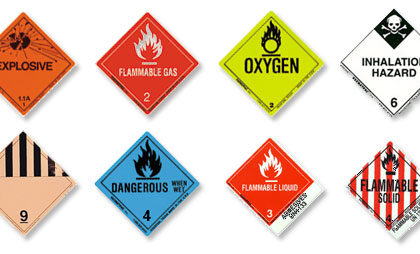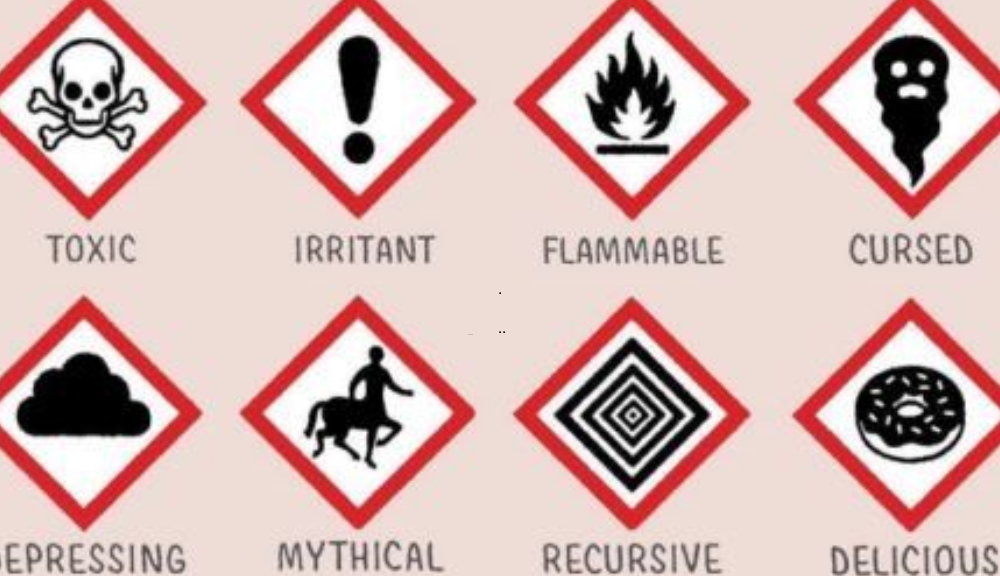How Do Hazard Labels Help Reduce the Risk of Accidents in the Workplace?In any workplace, the management’s most important responsibility is to make sure that the environment is safe. Hazard labels are one of the most powerful and invaluable tools to minimizing the risk of having an accident. These labels are colourful logos to advise the workers of possible dangers that they may be exposed to while at work. Thus, with the correct application of labels, safety in the workplace can be greatly enhanced, and the occurrence of adverse circumstances can be minimized.

What Are Hazard Labels?
These labels are visual signals that inform about certain risks related to materials, substances, equipment, or working conditions. These are often brightly coloured with various symbols, words or numbers that convey important information on the item. These labels are useful in different sectors like manufacturing, construction, health care, and in a chemical facility where everyone in the workplace must be informed of possible dangers.
Importance of Labels in Reducing Workplace Accidents
- Clear Communication of Risks: Labels provide workers with immediate, easily recognizable information about potential dangers. For example, labels on chemical containers alert employees about toxic substances, while labels on machines indicate moving parts or electrical hazards. This direct communication helps workers make informed decisions and take necessary precautions, reducing the chances of accidents.
- Enhancing Employee Awareness: When workers can quickly spot a hazard, they can take steps to avoid it. Labels act as constant reminders of the risks present, reinforcing safety measures that might otherwise be overlooked. This heightened awareness helps workers stay vigilant and focused on their safety, lowering the likelihood of human error.
- Promoting Compliance with Safety Standards: Hazard labeling is not only a best practice but also a legal requirement in many countries. Organizations must comply with safety regulations, and labels are often a key component of these laws. By using labels, companies ensure they meet legal safety standards, reducing the risk of penalties and fostering a culture of safety.
- Preventing Accidental Exposure or Injuries: In workplaces dealing with hazardous chemicals, machinery, or high-risk tasks, labels help prevent accidental exposure. Whether it’s a corrosive material, flammable substance, or heavy machinery, labels clearly identify the risks, ensuring that employees use proper safety equipment or follow specific safety protocols. This helps prevent injuries such as burns, electrical shocks, or even fatal accidents.
Types of Labels
There are various types of labels used across different industries. Some of the common types include:
- Chemical Labels: Used to identify dangerous chemicals, highlighting risks like toxicity, flammability, or corrosive properties.
- Electrical Labels: Indicate the presence of high-voltage electrical equipment and potential shock hazards.
- Mechanical Labels: Warn about machinery with moving parts that could cause injury if not properly guarded.
- Personal Protective Equipment (PPE) Labels: Remind workers to wear specific protective gear such as gloves, helmets, or goggles when working in certain areas.
Each type of hazard label serves a unique function, but all share the goal of minimizing risk by making workers aware of potential dangers.

In Conclusion
By clearly identifying risks and fostering awareness, labels play a crucial role in reducing workplace accidents and injuries. For high-quality, durable labels that meet industry standards, trust Labels and Labeling to provide the best solutions for your workplace safety needs.
In any workplace, the management’s most important responsibility is to make sure that the environment is safe. Hazard labels are one of the most powerful and invaluable tools to minimizing the risk of having an accident. These labels are colourful logos to advise the workers of possible dangers that they may be exposed to while at work. Thus, with the correct application of labels, safety in the workplace can be greatly enhanced, and the occurrence of adverse circumstances can be minimized.

What Are Hazard Labels?
These labels are visual signals that inform about certain risks related to materials, substances, equipment, or working conditions. These are often brightly coloured with various symbols, words or numbers that convey important information on the item. These labels are useful in different sectors like manufacturing, construction, health care, and in a chemical facility where everyone in the workplace must be informed of possible dangers.
Importance of Labels in Reducing Workplace Accidents
- Clear Communication of Risks: Labels provide workers with immediate, easily recognizable information about potential dangers. For example, labels on chemical containers alert employees about toxic substances, while labels on machines indicate moving parts or electrical hazards. This direct communication helps workers make informed decisions and take necessary precautions, reducing the chances of accidents.
- Enhancing Employee Awareness: When workers can quickly spot a hazard, they can take steps to avoid it. Labels act as constant reminders of the risks present, reinforcing safety measures that might otherwise be overlooked. This heightened awareness helps workers stay vigilant and focused on their safety, lowering the likelihood of human error.
- Promoting Compliance with Safety Standards: Hazard labeling is not only a best practice but also a legal requirement in many countries. Organizations must comply with safety regulations, and labels are often a key component of these laws. By using labels, companies ensure they meet legal safety standards, reducing the risk of penalties and fostering a culture of safety.
- Preventing Accidental Exposure or Injuries: In workplaces dealing with hazardous chemicals, machinery, or high-risk tasks, labels help prevent accidental exposure. Whether it’s a corrosive material, flammable substance, or heavy machinery, labels clearly identify the risks, ensuring that employees use proper safety equipment or follow specific safety protocols. This helps prevent injuries such as burns, electrical shocks, or even fatal accidents.
Types of Labels
There are various types of labels used across different industries. Some of the common types include:
- Chemical Labels: Used to identify dangerous chemicals, highlighting risks like toxicity, flammability, or corrosive properties.
- Electrical Labels: Indicate the presence of high-voltage electrical equipment and potential shock hazards.
- Mechanical Labels: Warn about machinery with moving parts that could cause injury if not properly guarded.
- Personal Protective Equipment (PPE) Labels: Remind workers to wear specific protective gear such as gloves, helmets, or goggles when working in certain areas.
Each type of hazard label serves a unique function, but all share the goal of minimizing risk by making workers aware of potential dangers.

In Conclusion
By clearly identifying risks and fostering awareness, labels play a crucial role in reducing workplace accidents and injuries. For high-quality, durable labels that meet industry standards, trust Labels and Labeling to provide the best solutions for your workplace safety needs.


Comments are closed.